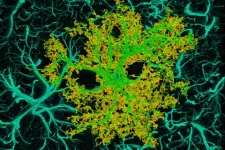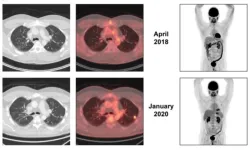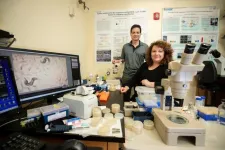Insects and spiders often receive little attention from people, except when we’re swatting them away. However, as arthropods — creatures distinguished by a hard exoskeleton and jointed legs— they play an essential role in sustaining the ecosystems humans rely on. Remarkably, arthropods make up approximately 84% of all known animal species.
A study published recently in Scientific Reports reveals how human activity affects biodiversity among arthropods and how nonbiological factors, such as daily temperature swings and proximity to the ocean, affect arthropod biodiversity in urban areas.
The research uncovered a few surprises and points to ways homeowners, landscapers and urban planners can ensure a healthy mix of these small but vital neighbors.
Community science aids study
Biodiversity refers to the variety of life forms in any given area. Generally speaking, greater biodiversity makes for a healthier, more resilient ecosystem. In urban settings, high biodiversity has been linked to benefits such as better air quality, decreased risk of flooding and even improved mental health for humans.
To assess arthropod biodiversity and related factors in the Los Angeles basin, scientists at the USC Dornsife College of Letters, Arts and Sciences collaboratied with researchers at the Natural History Museum of Los Angeles County’s BioSCAN project.
BioSCAN is a community science project run by the Natural History Museum and supported by about 80 volunteers who helped place small, tent-like net structures called Malaise traps in backyards, gardens and other locations throughout greater Los Angeles. From these traps, scientists collected flying arthropods such as bees, flies and moths. They also hand-collected spiders in those same locations.
Unforeseen findings in arthropod biodiversity
During the year-long project, museum staff tallied the arthropods to determine the diversity of groups living in each area. The results were surprising.
“In general, we thought most arthropods would be similarly affected by environmental factors such as land covered by asphalt or concrete and temperature fluctuations over a 24-hour cycle,” said lead researcher Melissa Guzman, Gabilan Assistant Professor of Biological Sciences and Quantitative and Computational Biology at USC Dornsife. “Instead, we found an unexpectedly large range of responses to factors such as these, both within closely related groups and across different groups.”
For example, the prevalence of hard surfaces such as concrete and asphalt had contrasting impacts on different insect populations. While it increased the diversity of fruit flies of the Drosophilidae family, it seemed to decrease the diversity of the crane flies in the Tipuloidea superfamily.
Diversity of spiders, interestingly, was high around hard-covered land. The researchers also found that temperature appeared to influence diversity of fungus gnats in the family Mycetophilidae as well as Syrphidae, a family comprising bee-like hover flies. Diversity among these insects decreased as the mercury rose.
The researchers speculate that higher temperatures in summertime dry up plants eaten by aphids, a food source for many hover flies. Also, non-native honeybees forage more in higher temperatures and so compete for the same foods some hover flies need.
Knowing how diversity among various species is linked to factors such as land value, land cover and temperature can help urban planners and developers adjust their projects in ways that boost biodiversity and bring its benefits to all Angelenos.
Many new species discovered
Brian Brown, entomology curator at the Natural History Museum, pointed to another surprising result that delighted the researchers: The project turned up many species of arthropods scientists didn’t know lived in the L.A. area, including close to 50 species previously unknown to science.
“Based on that, we have a new understanding of what the biodiversity of Los Angeles is like in terms of insects,” he said. “So instead of the 3,500 or 4,000 species that we previously thought, now we’re thinking there are close to 20,000 species living here in the ‘city of insects.’”
The researchers credit the L.A. community members who participated with the BioSCAN project as vital to understanding the region’s biodiversity and, therefore, key to conservation efforts. As a tribute, they named each new-found species after a participating family.
Findings have lessons for humans
Despite some study challenges — it doesn’t account for seasonal variations in rainfall and temperature, for example — the researchers say the findings point to ways Angelenos can ensure they increase arthropod biodiversity.
“Prioritizing green areas and reducing the use of pesticides would go a long way,” Guzman says. “And urban planners and builders could include microhabitats designed to allow a greater variety of species to thrive.”
While the study centered on the L.A. region, the researchers believe similar results would apply to other, similar communities, guiding land developers and homeowners in many cities in western North America.
About the study
In addition to Guzman, USC Dornsife researchers on the study include co-first authors Jayme Lewthwaite and Teagan Baiotto, Yan Yin Cheung, Austin Baker, Charles Lehnen and Vaughn Shirey.
In addition to Brown, Natural History Museum researchers include Terrence McGlynn, also of California State University Dominguez Hills, and Lisa Gonzalez.
Emily Hartop of Museum für Naturkunde in Berlin, Peter Kerr of CDFA Plant Pest Diagnostics Center and Eric Wood of California State University Los Angeles are also authors.
END






